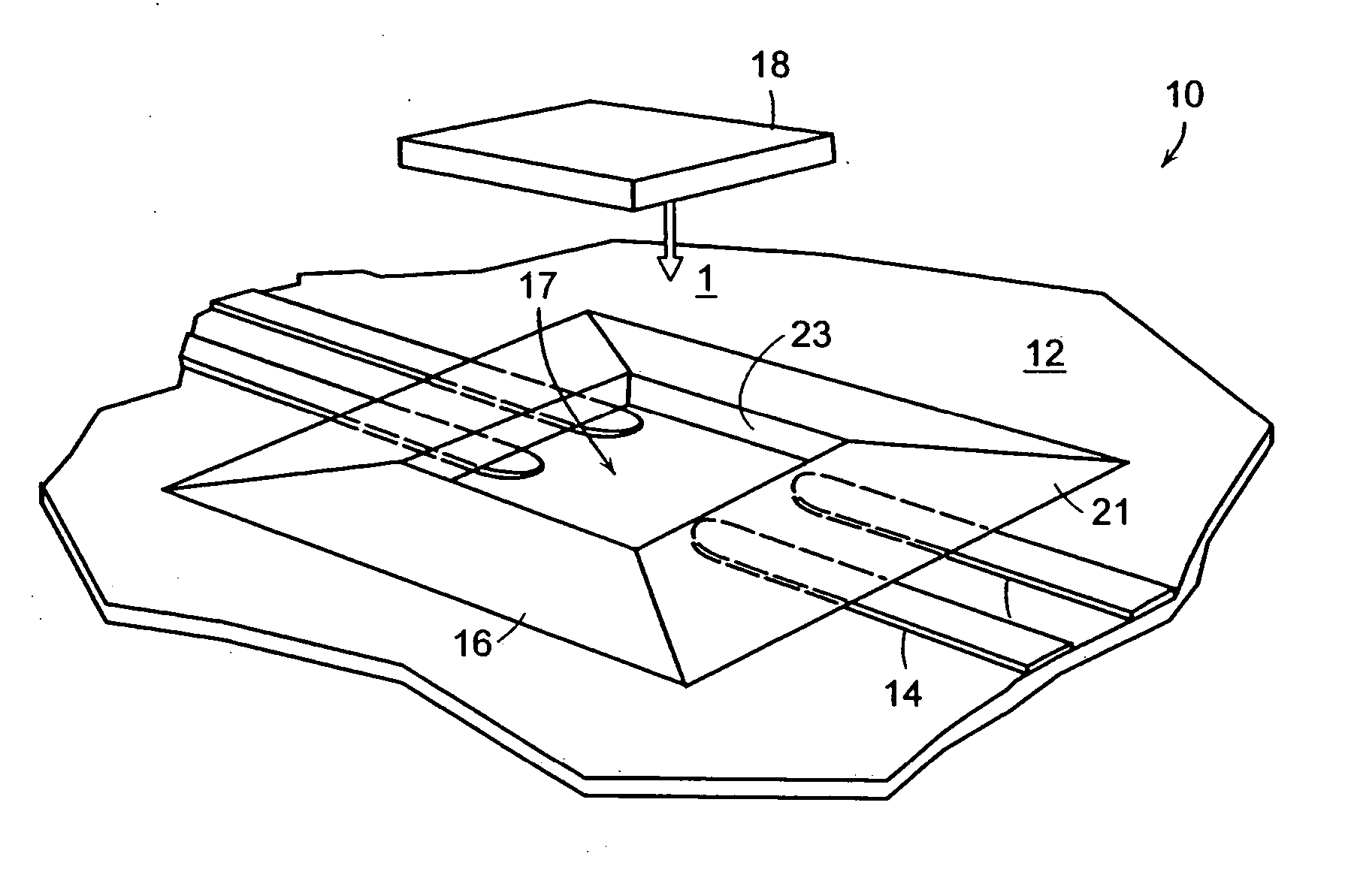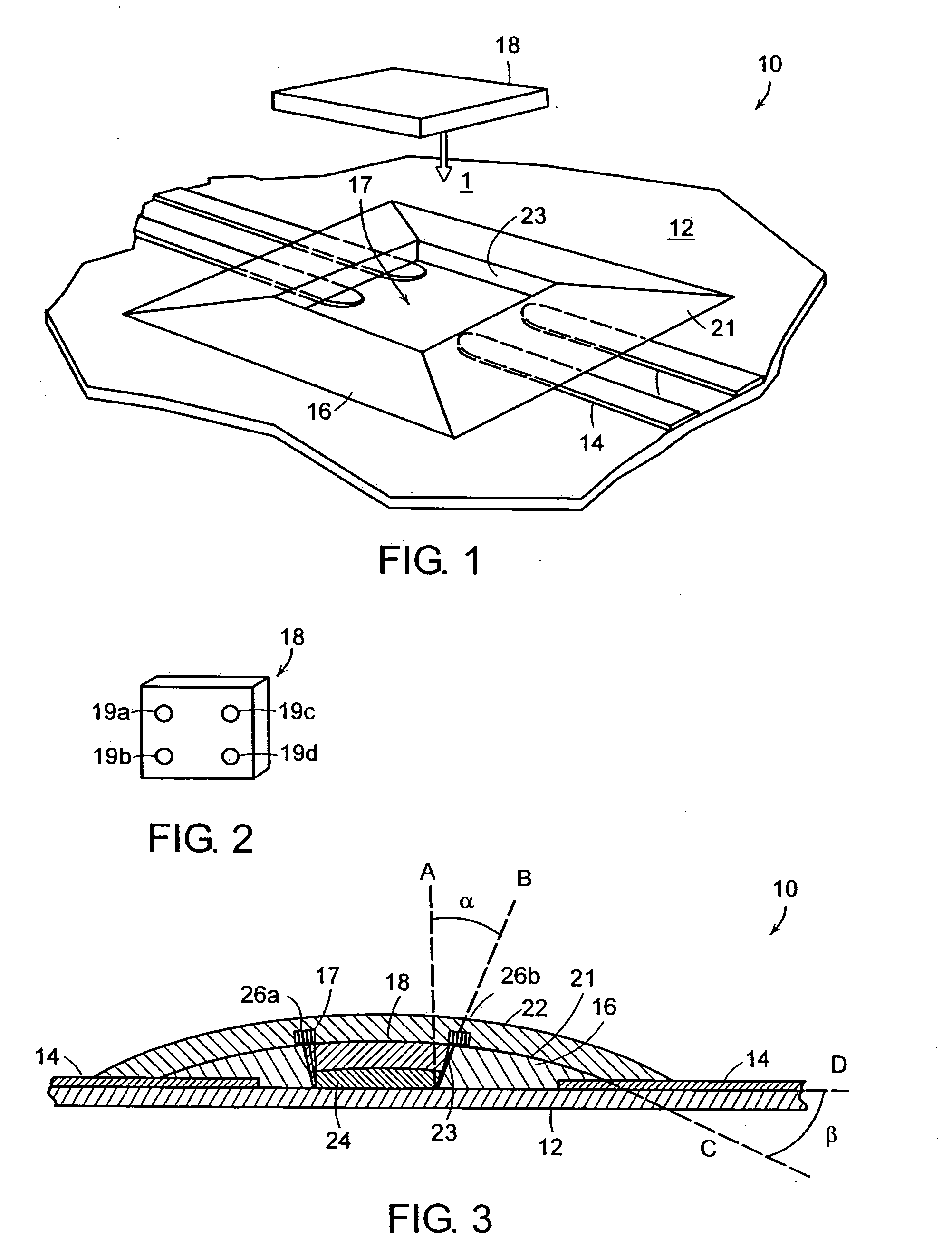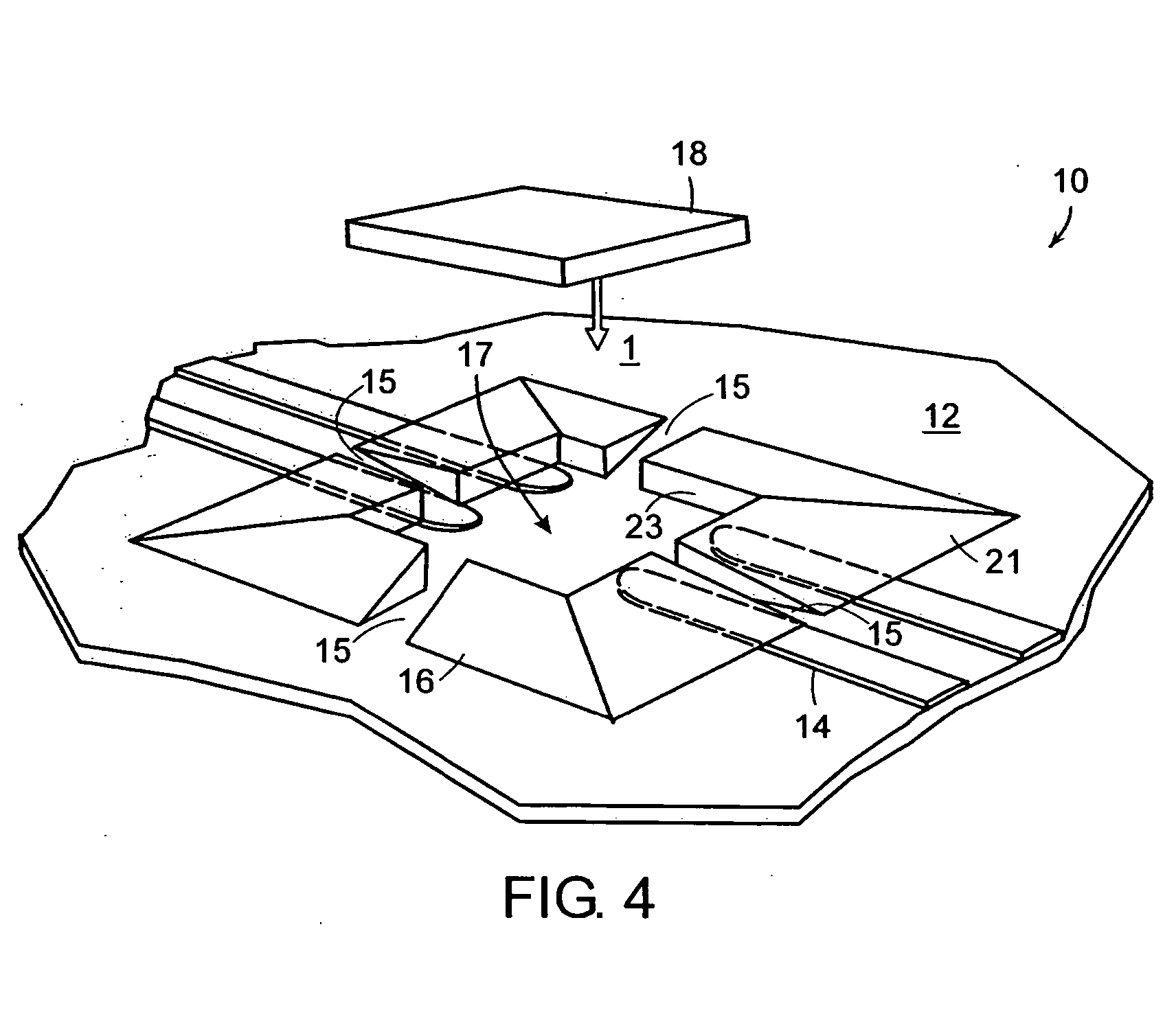Semiconductor die positioning system and a method of bonding a semiconductor die to a substrate
a positioning system and semiconductor technology, applied in the field of semiconductor packaging, can solve the problems of inconvenient assembly, low production yield, inconvenient assembly, etc., and achieve the effects of high fidelity, high fidelity, and reliabl
- Summary
- Abstract
- Description
- Claims
- Application Information
AI Technical Summary
Benefits of technology
Problems solved by technology
Method used
Image
Examples
Embodiment Construction
[0021] Two embodiments of the invention to accommodate the semiconductor die in a normal (bond pads up) and flip chip (bond pads down) orientation are presented here.
[0022]FIG. 1 is a perspective view of a die positioning system 10 in accordance with a preferred embodiment of the present invention. The die positioning system 10 includes a substrate 12 having a plurality of electrical leads 14 formed thereon. A die positioning structure 16 is disposed on the substrate 12 and substantially covers the plurality of electrical leads 14. The die positioning structure 16 defines in part an outer slope 21 and an inner slope 23. The die positioning structure 16 also defines a die positioning cavity 17, which allows selective access to the plurality of electrical leads 14. The die positioning cavity 17 is adapted to receive a semiconductor die 18, which may be placed into the die positioning cavity 17 along the direction of arrow 1.
[0023] The substrate 12 should be of low stopping power (su...
PUM
 Login to View More
Login to View More Abstract
Description
Claims
Application Information
 Login to View More
Login to View More - R&D
- Intellectual Property
- Life Sciences
- Materials
- Tech Scout
- Unparalleled Data Quality
- Higher Quality Content
- 60% Fewer Hallucinations
Browse by: Latest US Patents, China's latest patents, Technical Efficacy Thesaurus, Application Domain, Technology Topic, Popular Technical Reports.
© 2025 PatSnap. All rights reserved.Legal|Privacy policy|Modern Slavery Act Transparency Statement|Sitemap|About US| Contact US: help@patsnap.com



